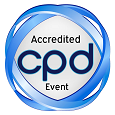
Hui Xu
Guangzhou University of Chinese Medicine, China
Title: Determination of mycotoxin contamination in Traditional Chinese Medicines by LC-MS-MS
Biography
Biography: Hui Xu
Abstract
Mycotoxins are toxic secondary metabolites from molds. Presently, liquid chromatography-tandem mass spectrometry (LC-MS-MS) has been widely used to evaluate mycotoxin contaminations in food and feed. However, application of LC-MS-MS to Traditional Chinese Medicines (TCMs) is difficult,because their complex matrices can cause matrix effect. Routinely, some purification procedures like immunoaffinity columns (IAC) should be included before injection to improve the accuracy and protect mass spectrometer. However, the high costs of columns restrict their application for large-scale screening. Therefore, the objective of our study is to develop a simple, rapid and cost-effective LC-MS-MS method for simultaneous determination of aflatoxins (AFB1, B2, G1 and G2) and sterigmatocystin (ST) in TCMs. The method is based on single extraction with (84/16, v/v) acetonitrile-water then analysis of the diluted crude extract without further clean-up. The chromatographic separation was achieved on a C18 column, with a mobile phase gradient prepared from aqueous 4 mmol L-1 ammonium acetate-0.1% formic acid and methanol. Quantification of the analytes was by selective reaction monitoring (SRM) on a triple quadrupole mass spectrometer in positive ionization mode. Special focus was on investigating and reducing matrix effects to improve accuracy. The established method was validated by determination of linearity, sensitivity, extraction recovery and precision. Comparison with IAC pretreatment demonstrated both methods are comparable in respect of the recovery of aflatoxins. Finally, the validated method was used to evaluate mycotoxin contamination in total 294 samples of 30 TCMs collected from local hospitals and pharmacies and the results obtained were analyzed.

